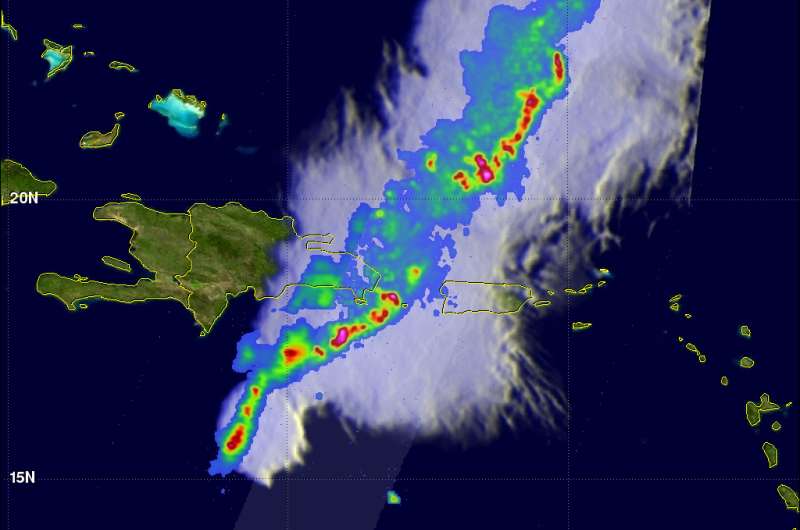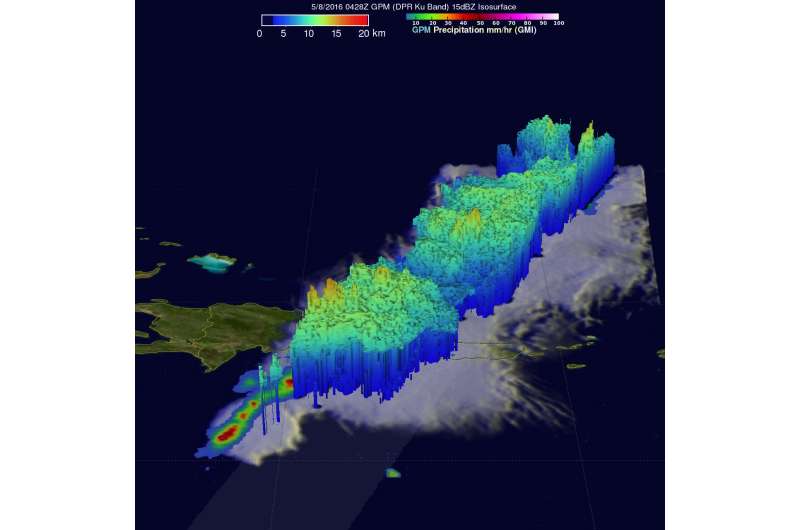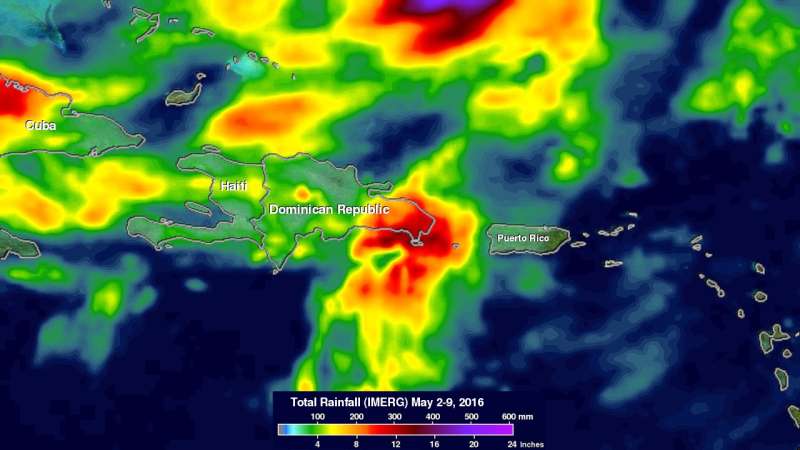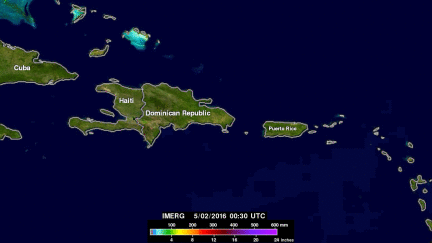GPM measures deadly flooding rainfall in Haiti and the Dominican Republic

In 2015, the website Reliefweb.int, which is a service provided by the United Nations Office for the Coordination of Humanitarian Affairs, provided this information about the drought in the Caribbean (which includes Haiti and the Domnican Republic):
"In Haiti, about 200,000 families (1 million people) have been affected by drought conditions since the beginning of 2015, especially in Sud-Est, Nord-Ouest and Artibonite regions. These prolonged conditions are aggravating the situation of 3.8 million food-insecure people in the country. (ACAPS, 21 Jul 2015)
The important crop losses resulted from severe drought affecting the country plunges the poorest population in a highly vulnerable situation. According to the latest bulletin of the National Food Security Coordination (CNSA), from July to December 2015, agricultural production has dropped by 50 percent. The most heavily hit areas are the South, the North-West, North-East, Northern Artibonite, and South-East. Forecasts indicate that others will see their situation worsen and reaching either "stress" or "crisis" levels in the coming months. (OCHA, 31 Aug 2015) Haiti is forecast to continue experiencing extremely warm and dry conditions through to May 2016."
However, the dry conditions did not continue through to May 2016. In fact, in late December 2015 the rains began and produced flooding in January 2016, in late February into March. During the week of May 2-6, 2016, Haiti and the Dominican Republic have almost erased the deficit of water with vast flooding that has killed four people in Haiti and five people in the Dominican Republic and displaced thousands of others. The heavy rains in the Dominican Republic have resulted in rivers overflowing and urban flooding, including the capital city of Santo Domingo. During the last three weeks, Haiti has seen the equivalent of half its usual yearly precipitation, even though the hurricane season which begins June 1 and runs through November 30 has not yet begun.

Over the past week extreme rainfall caused flooding that resulted in the deaths of four in Haiti and the evacuation of over 2500 people in the Dominican Republic. The GPM core observatory satellite saw a line of heavy rainfall on the eastern side of the Dominican Republic when it flew over on May 8, 2016 at 0428 UTC.
GPM's Microwave Imager (GMI) and Dual-Frequency Precipitation Radar (DPR) instruments collected data that were used to estimate rainfall. This precipitation is shown on a top-down satellite view.
Powerful storms were measured dropping rain at a rate of almost 300 mm (11.8 inches) per hour along this line of storms. GPM's Radar (DPR Ku Band) were used to measure the 3-D structure of precipitation in this area. Some tall thunderstorms north of Puerto Rico were measured by DPR reaching heights of over 16 km (9.9 miles).

Data from NASA's Integrated Multi-satellitE Retrievals for GPM (IMERG) were used to estimate the amount of rain that fell over this area during the past week (May 2-9, 2016). The heaviest rainfall was estimated by IMERG to be over 300 mm (11.8 inches) in large areas of the eastern Dominican Republic.
GPM is a joint missions between NASA and the Japanese space agency JAXA.

Provided by NASA's Goddard Space Flight Center




















